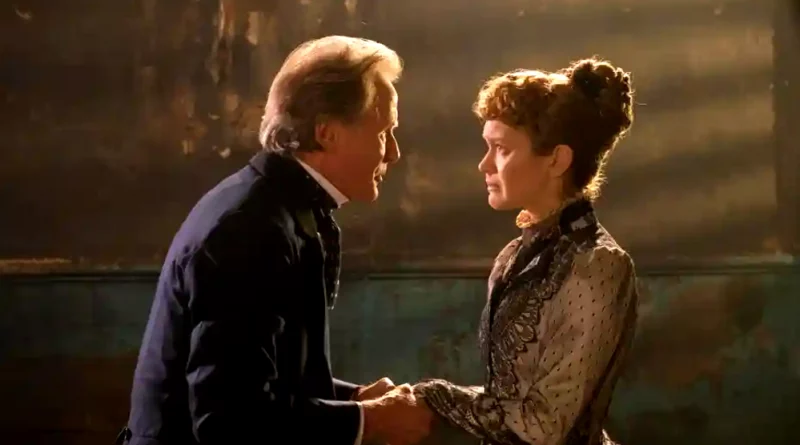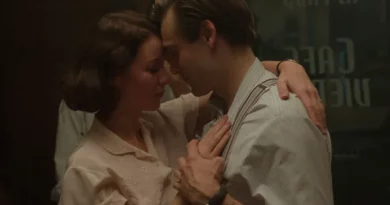The Limehouse Golem (15) | Close-Up Film Review
Dir. Juan Carlos Medina, UK, 2016, 109 min
Cast: Olivia Cooke, Bill Nighy, Douglas Booth, Daniel Mays, Eddie Marsan
Review by Carol Allen
Detective Inspector John Kildare (Nighy) is assigned to the case, largely because his superiors don’t like him and they think the case is unsolvable. Kildare though also becomes involved in the situation of music hall star Elizabeth Cree (Cooke), who is about to be hanged for the murder of her husband John Cree (Sam Reid). Kildare suspects Cree is the Golem and if he can prove it, Elizabeth will be saved from the rope.
As Ackroyd does in his novel, screenwriter Jane Goldman and director Juan Carlos Medina elect not to tell their tale in a straightforward, linear way. The story is framed by a melodramatic theatre piece dramatizing Elizabeth’s story, which is led by her good friend and fellow music hall star Dan Leno (Booth). As Kildare questions Elizabeth, the film gradually reveals her disturbing past history, played out in her memories. And when Kildare finds what appears to be the diary of the Limehouse Golem, we see the gruesome murders being played out in his imagination by all the possible suspects one by one.
Inevitably there are echoes of Jack the Ripper in the tale, though the Golem murders of 1880 predate the Ripper by eight years. But the film is also steeped in the literature and particularly the theatre of the time. Rather than a simple murder mystery or a horror film, it is a scintillating exercise in style. The threatening and oppressive streets of London are like a theatrical representation of the world of the by then late Charles Dickens, while much of the story is told in the colourful and raucous music hall setting of the period.
Leno was a big star of his day with his comic monologues and cross dressing – he virtually created the pantomime dame. Although he was by reputation a devoted family man, Booth makes him a deliciously flamboyant and sexually ambiguous figure on stage as well as a touchingly devoted friend to Elizabeth.
Cooke as Elizabeth is on the surface a vulnerable, big eyed heroine, though when we discover the story of her past and see her male impersonations on stage, we realise there is another, tougher side to her, while Reid as her husband is just a very nasty piece of work.
There is though something unsatisfying about the telling of the story, a feeling that we need to explore these characters in greater depth. The sexual ambiguity I mentioned in Booth’s performance is a “something unspoken” undertow to the whole society, hinted at intriguingly throughout but never overtly explored.
Kildare is unpopular with his superiors because they suspect him of being “not the marrying kind” – something with which Nighy’s otherwise likeable and gentlemanly performance does not seem totally at ease. It is there in Elizabeth’s on stage male impersonation, which she carries out onto the streets where it gives her a feeling of power. There’s also something predatory and sinister about the apparently avuncular “Uncle” (Marsan), who runs the music hall and that sexual ambiguity even ultimately extends to Kildare’s loyal sidekick, Constable Flood (Mays).
All very true to Victorian morals of course that such matters should be kept under wraps but as an audience we feel we haven’t got really inside the skin of these characters. Maybe it is, as has been suggested, that we are now used to the more detailed and leisurely telling of complex tales such as this that we are offered in six part television series and that a mere 109 minutes does not allow the space that the story really needs?
However, for its atmosphere, its colourful and exciting music hall setting, Booth and Cooke’s performances in particular and its overall sense of style this film is still well worth a viewing.



